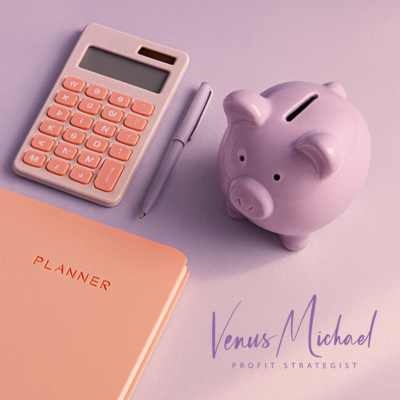The “right” Profit First percentages depend on your business size, structure, and season. Start by identifying your real revenue and use the TAPs (Target Allocation Percentages) as a guide, then adjust based on your actual financials.
What Are Profit First Percentages?
Profit First uses a simple, powerful system to allocate your income into four core categories:
- Profit
- Owner’s Pay
- Taxes
- Operating Expenses (OPEX)
These Profit First percentages aren’t random. They’re based on what healthy, sustainable businesses typically need, and they give you a roadmap to clarity and control.
Profit First Percentages by Revenue: Official Target Allocations (TAPs)
In the original Profit First book, author Mike Michalowicz outlines suggested TAPs based on your business’s Real Revenue (total income minus pass-through expenses). Here’s how they break down:
- If you’re earning under $250K, the model recommends:
- 5% to Profit, 50% to Owner’s Pay, 15% to Taxes, and 30% to Operating Expenses.
- At $250K–$500K, shift to:
- 10% Profit, 35% Owner’s Pay, 15% Taxes, 40% OPEX.
- At $500K–$1M, aim for:
- 15% Profit, 30% Owner’s Pay, 15% Taxes, 40% OPEX.
- Once you cross $1M, the model adjusts to:
- 10% Profit, 10% Owner’s Pay, 15% Taxes, and 65% to OPEX.
But here’s the thing: these are not one-size-fits-all rules. Think compass, not cage. Your Profit First percentages should evolve with your business over time.
How to Figure Out What’s Right for You
- Start with Real Revenue
Take your total income and subtract any pass-through expenses (like contractors or materials). That’s your Real Revenue — the number you’ll use to calculate your percentages.
- Run Your Current Allocations
What are you actually spending? Use your bookkeeping data (or ask your bookkeeper 💁♀️) to break it down by:
- What % to Owner’s Pay
- What % to Operating Expenses
- How much is left for Taxes and Profit
These are your Current Allocation Percentages (CAPs) your starting point.
- Build a Bridge Plan
If your OPEX is at 75%, you won’t drop it to 30% overnight. Instead, decrease expenses gradually 2–3% per quarter, while increasing Profit and Owner’s Pay.
Profit First Percentages in Real Life: Venus’ Bottom Line
You might not be able to follow the Profit First TAPs perfectly from day one. That’s okay.
The goal isn’t perfection. The goal is progress.
When you allocate your money with intention, you stop reacting and start leading. You’re making intentional decisions about your money instead of reacting to it.
Real-World Examples
Photographer earning $175K/year:
- Starting CAPs: 2% Profit / 40% Owner’s Pay / 10% Tax / 48% OPEX
- Venus Plan: Adjust by 2% per quarter to reach 5% Profit and 30% OPEX within 12 months
Consultant earning $400K/year:
- Starting CAPs: 0% Profit / 60% OPEX / 40% Owner’s Pay
- Venus Plan: Start Profit at 1%, drop OPEX to 55%, increase tax setting
These are exactly the kinds of shifts we make together in our consulting sessions.
Want Help Applying This?
I’m Venus Michael — a Profit First Certified Bookkeeper located in Central Texas and proudly serving creative entrepreneurs, consultants, and service providers across the U.S. At One21Accountability, we help you create a cash plan that actually fits your business so you can pay yourself, stay profitable, and stop panicking about taxes.
We’ll help you:
- Customize your Profit First percentages
- Build a plan that fits your business
- Pay yourself — consistently and confidently
👉 Want help figuring out your percentages? Let’s do it together — book a chat.
Want to Know Your Ideal Profit First Percentages?
Download the free worksheet to discover how much to allocate to Profit, Owner’s Pay, Taxes, and Operating Expenses — based on your business size and stage.


